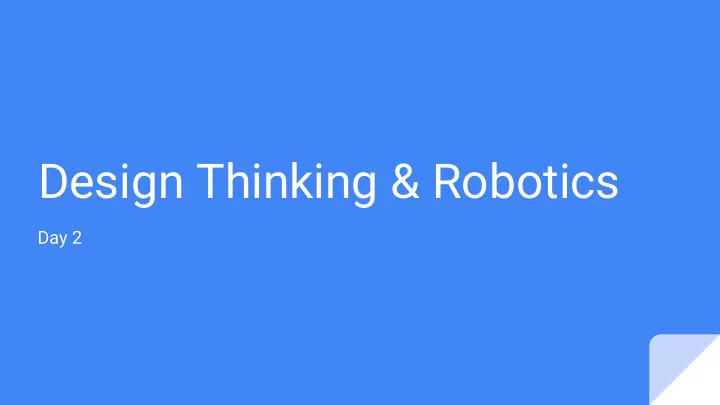

Design Thinking & Robotics Day 2
What is cerebral palsy?
What is cerebral palsy?
What is cerebral palsy?
Empathy Assignment Within your team, help one member simulate one of the following: Simulate tight quadriceps muscles by preventing bending of your knee (i.e. ● attach a broomstick or yardstick to your leg as a cast) ● Simulate tight calf muscles by preventing bending of your ankle (i.e. create a cast with cardboard, bandages, etc.) Wear the device for ten minutes, trying out everyday tasks that one would typically do in school, eg. walk to class, get books from lockers, sit at desks, etc. Ensure that your team member remains safe at all times! Sit down with your team member before they remove the device and interview them about what they experienced
Defining the Problem
What Is a Need Statement? A concise statement that describes a problem, the population affected, and the desired outcome ● Ex. A method for decreasing the risk of concussion for children in high impact sports Ensure that the need statement does not focus on a specific solution.
Meet Tommy Tommy is an 12 year old boy with level III spastic diplegic cerebral palsy. He is able to walk using braces and crutches. For long distances, however, he prefers to use his wheelchair since walking is an extremely strenuous activity for him. At school, Tommy uses his crutches. However, the chair and desk legs often cause him to stumble in the classroom. Additionally, while he tries to keep his crutches out of the way in the classroom, they often fall or cause somebody else to trip, disrupting the class. Tommy loves acting and wants to audition for the school play. Tommy also loves basketball and wants to be able to play pick-up games with friends.
Generate Need Statements ● Silently, each team member generates 3 need statements ● One statement per sticky note ● Discuss your need statements with team ● Prioritize need statements ● Pick one need statement to work on for the rest of the project
Recommend
More recommend